Secrets Of Deep Meditation – How To Meditate Deeply
Welcome peace to your life with this in-depth guide to meditating effectively.

Image: iStock
Are you stressed? Is the mundane lifestyle getting to you? If your answer is yes, and has been yes for a while, you would likely have been asked to try deep meditation. But meditation sounds complex and boring, right? Then why do so many people recommend you do it?
This is why – meditation is not an exercise, task, or activity where you apply your mind. It is a state of rest — so deep that it can be deeper than the deepest sleep you can ever have. Deep meditation is a state of intense awareness and relaxation beyond standard meditation techniques. In this state, your mind is still and at peace – free from worry and agitation. It enables people to access their subconscious, which enhances emotional stability and mental clarity.
Sounds easy, right? Actually, it isn’t. The reason is that we are so muddled up in life and our worries that we have trained our minds to think constantly. We get tangled in chains of thoughts, and it takes patience and practice to achieve calmness and stillness of the mind and enter that state of meditation.
A 2018 meta-analysis study analyzes the effect of mindfulness meditation on sleep patterns and quality. The study was done on 18 trials with 1654 participants. It showed a moderate strength of evidence that mindfulness meditation increased sleep score by 0.33 post-intervention and 0.54 at follow-up.
 Trivia
TriviaIn This Article
Benefits Of Deep Meditation
Many therapists, yoga practitioners, and mindfulness experts recommend deep meditations to address a wide range of issues. Deep meditation offers profound physical, mental, and emotional benefits. This practice:
- Triggers a relaxation response, which helps reduce heart rate, blood pressure, and stress hormones (1).
- Enhances emotional well-being, reducing the perception of pain and symptoms of anxiety and depression and fostering emotional resilience (1).
- Sharpens focus, concentration, and memory, fostering cognitive clarity and creativity (1).
- Promotes better sleep that helps rejuvenate the mind and body (1).
- Helps manage premenstrual syndrome and menopausal symptoms (1).
- Reduces blood pressure and psychological stress (1).
Deep meditation is also said to encourage a sense of interconnectedness and empathy, strengthening social relationships. Moreover, cultivating mindfulness through deep meditation instills a sense of inner peace, resilience, and a deeper understanding of oneself, fostering holistic well-being and improving self-awareness.
Deep meditation also promotes a stronger sense of community and connection. It develops a comprehensive approach to well-being, increases emotional intelligence, and develops compassion for both oneself and others.
Svemir Vranko, a blogger, reflected on his first experience of samadhi or deep meditation at the age of 16 in his blog. Describing a deep meditation session, he said, “I surrendered my soul to the endless expanse in the realm above my head. That movement of the soul led to a kind of response that began as an announcement of the arrival of blessings from above and that, like an energy shower, descended over the top of my head through the spine and the whole body in the form of pleasant waves of energy, electric tingling sensations and divine grace (i).”
So the most important question remains…
Key Takeaways
- A lack of focus and intensity make entering a deep state of meditation challenging.
- To start deep meditation, you must stay calm, ensure your mind is happy, and focus on your affirmations.
- It is necessary to accept negative thoughts to move towards positive thinking and better concentration.
- The transition between a deep state of meditation and coming out of it should not be rushed.
Why Can’t We Enter A State Of Deep Meditation Easily?

It takes effort to go deep into the state of meditation. When you attempt it, it is likely you will feel that it isn’t clear, or you are not moving further. This is because of lack of focus and intensity. You don’t understand the point of deep sleep meditation, and how to do it right.
Our minds have two functions. The first one is ‘knowing’, and the second one is ‘doing.’ Meditation is all about calming the ‘doing’, and completing the tranquility while maintaining the ‘knowing.’
Most people start meditating without preparing themselves for it. You might not realize it, but preparing for the act not only allows you to quiet your mind with ease but also makes the whole routine more pleasant.
So here are a few pointers that will help you calm your mind and get into a state of deeper meditation.
Techniques To Help You Get Into A State Of Deep Meditation
Preparation
Set Your Intentions And Affirmations
Practice
Post The Practice
Come Out Of The Meditative State
Preparation
As if meditating is not hard enough, preparing for it might seem like a mammoth task.
But experts say that when you prepare your body and mind before you delve into achieving a state of complete relaxation, you are sure to have a great session. So, these are a few deep meditation techniques that you can do as you gear up.
1. Calm Your Breath And Body
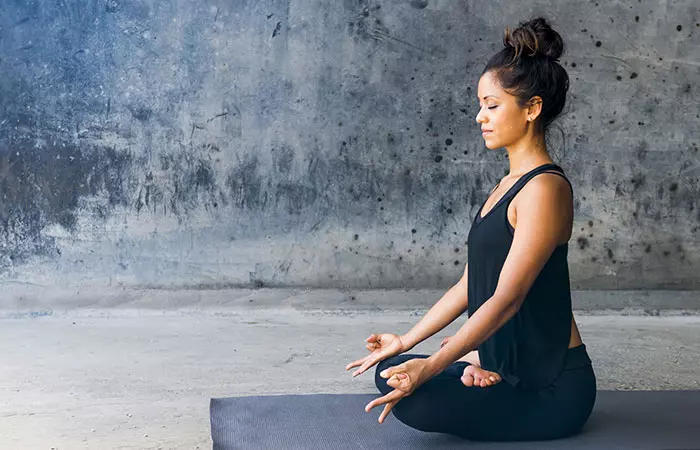
The breath, mind, and body are all interconnected. When you relax your body and calm your breathing, your mind automatically calms down. When this happens, the parasympathetic nervous system is activated, and therefore, the response to stress is regulated.
The Easy Way
Sit in a meditative posture and breathe five times. You must make sure you breathe in from the nose, and breathe out from your mouth. Also, the breaths must be deep and long. When you breathe in, you must make yourself aware of the present. When you breathe out, relax all the muscles in your body, and just let go. Let go of your worries and pain. As you do this, pay special attention to your tongue, jaw, throat, and forehead.
The Right Way
You must practice a few yoga asanas and lighten up your body. Take 10 minutes and do each post to its full expression.
These are some asanas that will help relax your mind:
- Setu Bandhasana
- Dhanurasana
- Balasana
- Adho Mukha Svanasana
- Ardha Matsyendrasana
- Uttanasana
- Supta Matsyendrasana
- Padmasana
- Shavasana
Once you have practiced these asanas, you must do some breathing exercises.
You must make sure that the duration of breathing out is longer than the breathing in. So, if you breathe in for four seconds, breathe out for eight. You can also try these time combinations: 3-6, 5-10, 6-12, and so on. Make sure you breathe gently. The key is to be comfortable, so listen to your body as you go on.
2. Make Sure Your Mind Is Happy

Our brain’s biggest agenda is to avoid pain and look for pleasure. So, as you prepare yourself for meditation, try and generate feelings of contentment, stability, and security. You must reassure your brain that all is well so that it reaches a state of serenity.
A happy mind is quiet and sorted, so your aim must be to make your mind happy. This is how you can do it:
- Think of the things you are grateful for.
- If you have had a good meditative experience, think of that.
- Assure yourself that all is well at the moment.
- Feel good about the constant healing and growth that is going on.
- If you believe in God, you can say a prayer before you meditate.
Look for a quiet place to meditate, away from your phone, pets, kids, etc. When you meditate, it is your time. Let everyone around you know that.
3. Set Your Intentions And Affirmations

You must focus on your intention before you delve into meditation. It will do wonders for you. You need to have a strong intention, though, to carry through with it. Your affirmation can be on these lines – “For the next X minutes, I will only focus on my meditation. There is nothing else for me to do, and nothing else for me to think about during this time. Mind, please don’t disturb me. I will start concentrating now.”
Determination is the key to meditation. If you don’t have it, don’t worry. Practice makes you perfect.
Practice
Now, that you are ready to begin your meditative session, these are a few things you must keep in mind.
4. Accept The Distractions

As a beginner, you are bound to get distracted by negative thoughts when you meditate. Don’t push yourself to think positive. Accept those thoughts without criticizing yourself. Criticism is harmful, and not in line with good spiritual practice.
Be gentle on yourself. It is you who taught yourself to get distracted, and so, you must give your mind some time to achieve mental clarity. Be kind and patient with yourself. Practice mindfulness with introspection and self-awareness.
5. Rejoice The Concentration

If you use an object to help you focus, there will come a time when your mind is a little too focused on that object. Don’t worry about it. Just enjoy how stable the mind gets with contemplation on that object. Or, instead of an object, you may also choose a prayer of your choice as done in spiritual meditation, where one mentally utters a prayer every time their thoughts start straying.
The mind’s primary function is to seek happiness and drive away pain and suffering. When you teach your mind how to concentrate, you are also centering your focus and training your mind to find happiness.
 Quick Tip
Quick TipBuddhism, especially Zen school, preaches that happiness and joy are two of the five factors of meditative absorption. When you learn to enjoy your meditation, your mind is less restless.
So, when your concentration is still developing, use a focal object. Once it becomes stable, do not disturb it. Just stay where you are.
Post The Practice
Meditation does not end when it ends. You need to make sure you practice the following points in order to complete the full meditative cycle.
6. Come Out Of The Meditative State Gently
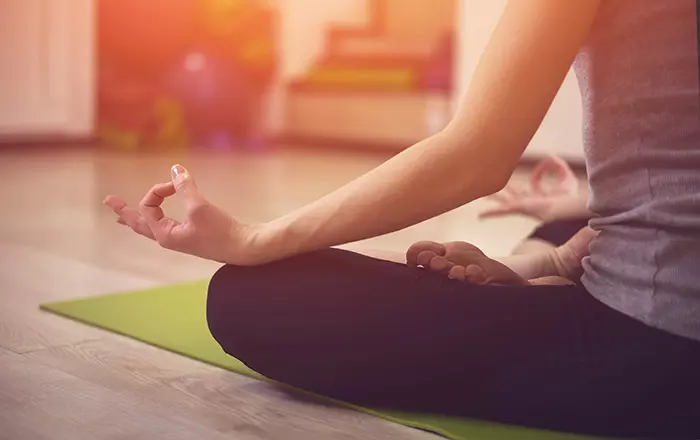
When you finish with your meditation, make sure you come out of it gently. You cannot be in a rush when you are meditating. Don’t disturb the inner peace you have achieved through meditation. Let your mind rest. You can move your neck and fingers first, and then gently open your eyes. The gentle transition helps you carry forward and weave in that meditative feeling in your lives.
7. Pen Down Your Thoughts

After you finish with the practice, it is quite essential to make a note of how the routine was. This will imbibe the habit into your routine, and you will also understand how meditation and your mind work.
Answer these simple questions after every session to help you better.
- How long did I sit?
- What do I feel after meditation?
- How did my mind react while I was in the state of meditation?
The answer to the third question could be quite vague. So make sure you note down things like what thoughts came to your mind, or how you felt while you were meditating. Also, make sure you note down how many times you got distracted, and how long you could focus. Recording your enlightenment from your meditation session helps you become aware of your emotions and thoughts.
If you aren’t too sure if you entered a deep meditative state, watch out for the signs mentioned in the section below.
Signs You Are Achieving Deep Meditation
Understanding the signs of deep meditation can greatly improve your practice. A deep sensation of inner calm, a loss of temporal awareness, increased sensory experience, and a release of long-suppressed emotions are typical signs that you have practiced a session of deep meditation. You may also feel more connected to your inner self or feel a sense of oneness with your environment. Once you start experiencing these mental benefits from your session you will feel encouraged to try deep meditation more often. Hence, an increased urge to repeat sessions is also a sign that you have been successfully achieving a deep meditative state.
Infographic: Steps To Go Into A Deep State Of Meditation
It’s possible to compare the profoundly peaceful state of meditation to the most restful sleep you’ve ever had. Meditation makes your mind relaxed, restful, and free of worry and stress. So what are you still holding out for? Start meditating by following the tips provided in the infographic below. Try it out and notice the difference!

Illustration: StyleCraze Design Team
Meditation is a restful state that is so profound that it is comparable to the deepest slumber you may have ever had. When meditation takes place, your mind is calm and at ease and devoid of anxiety and agitation. So, what are you waiting for? Follow the tips mentioned in this article and start practicing deep meditation. This art form may take time and effort to perfect, but once you master it, you will notice a significant improvement in your life. Give it a shot and see the difference!
Frequently Asked Questions
How long does it take to get into a deep meditative state?
The time taken to enter a meditative state may vary from person to person. If done after a proper meditation warm-up, it will only take a couple of minutes. Just make sure you are not distracted by anything.
Can too much meditation be harmful?
Yes. Excessive meditation may lead to increased emotional pain, anxiety, fear, and loss of orientation (2). However, further scientific research is required to back this statement up.
Is it necessary to have a teacher or guide for deep meditation?
Although practicing alone is a crucial component of full practice, beginning with the steady direction of an experienced teacher can be extremely helpful. Our minds stray so easily, and a teacher’s clear instructions can help us return to the present moment.
How long should I meditate to achieve deep meditation?
According to the research mentioned above, 13 minutes of meditation each time is sufficient to experience its benefits. However, consistency might be equally significant. It is unlikely that practicing for 13 minutes once every few months will have the same positive effects as practicing for 5 minutes every day.
Can anyone practice deep meditation?
Yes, anyone can practice deep meditation; it allows you to quiet down your mind and body while reaching a higher level of consciousness.
Is deep meditation like sleep?
Both sleep and meditation are hypometabolic states in which breathing and other bodily functions slow down. Both help relieve stress, but meditation offers a much deeper level of sleep than sleeping does. As a result, more deeply ingrained impressions, or samskaras, depart from the system.
Why do I cry while meditating?
In most cases, crying during meditation is an opportunity to release any trapped emotions, which can be healing. But sometimes, while meditating, more challenging emotions surface.
Embark on a mind-altering journey as you delve into the fascinating world of meditation. Explore the profound impact it has on your brain and unlock the transformative power within.
Personal Experience: Source
StyleCraze's articles are interwoven with authentic personal narratives that provide depth and resonance to our content. Below are the sources of the personal accounts referenced in this article.
i. A deep meditation experiencehttps://medium.com/@svemir.vranko/samadhi-experience-ce1a0a093019
References
Articles on StyleCraze are backed by verified information from peer-reviewed and academic research papers, reputed organizations, research institutions, and medical associations to ensure accuracy and relevance. Read our editorial policy to learn more.
- Meditation: Process and effects
https://www.ncbi.nlm.nih.gov/pmc/articles/PMC4895748/ - Adverse Effects of Meditation: A Preliminary Investigation of Long-term Meditators
http://deanehshapirojr.org/wp-content/uploads/2016/10/Adverse-Effect-of-Meditation.pdf
Read full bio of Garima Singh
Read full bio of Shirin Mehdi
Read full bio of Arshiya Syeda
Read full bio of Moksha Gandhi






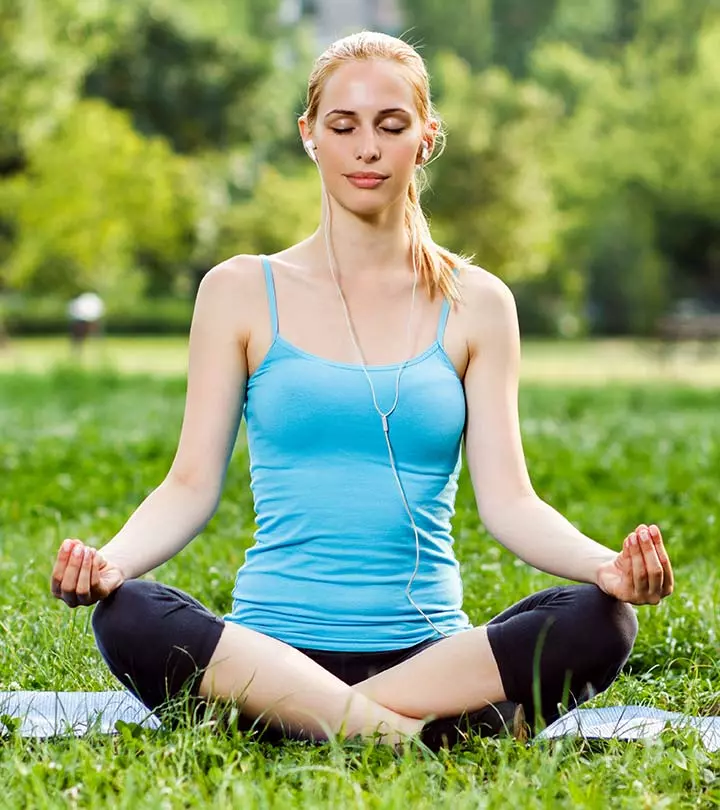
















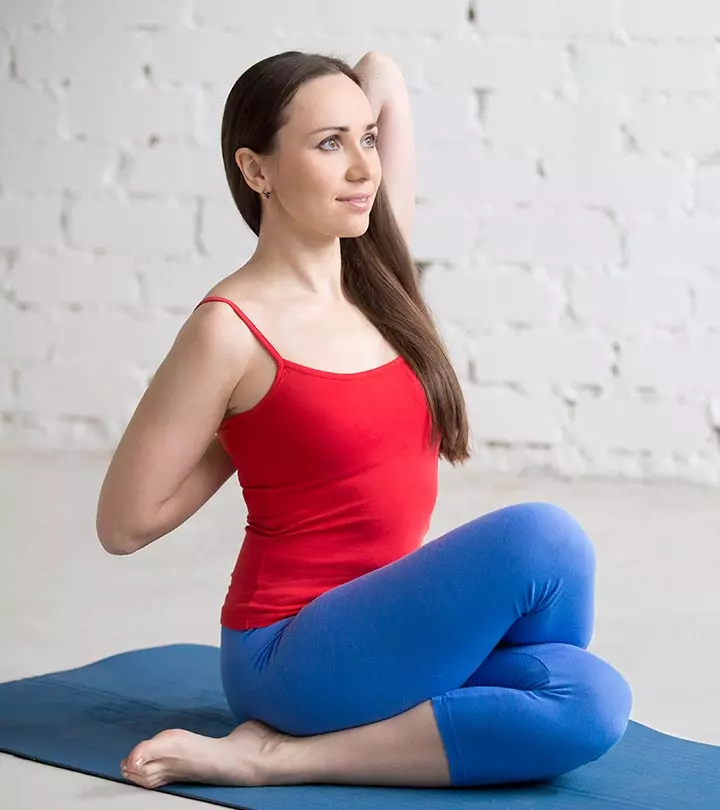

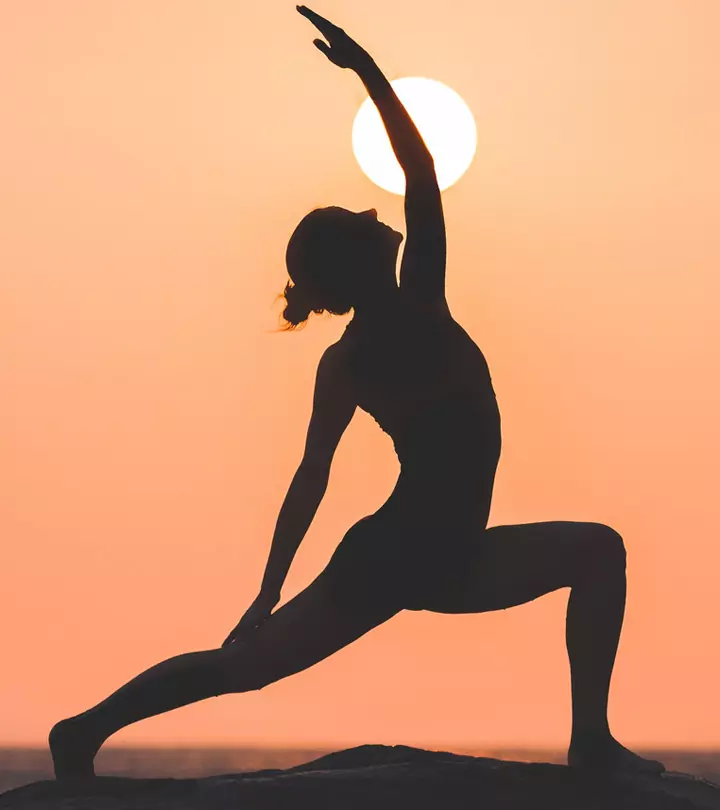
Community Experiences
Join the conversation and become a part of our empowering community! Share your stories, experiences, and insights to connect with other beauty, lifestyle, and health enthusiasts.